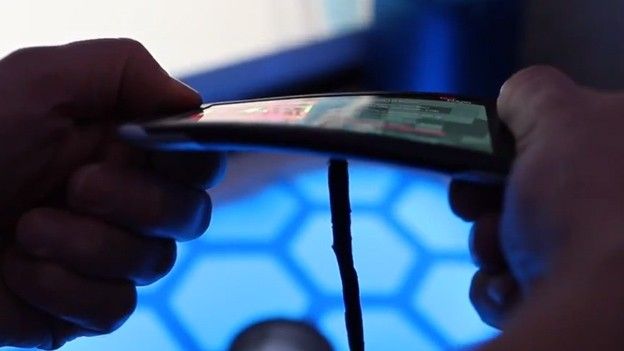

Nokia continues its attempts to woo potential mobile customers with the unveiling of a bendable concept phone, dubbed the Kinetic, which can be controlled by physical actions, such as squeezing the handset.
The Nokia Kinetic was revealed at the Nokia World 2011 event in London, where Nokia finally released the Lumia 710 and 800 handsets running Windows Phone 7.
Nokia says that its Kinetic prototype is not a touch screen but, instead, allows the user to drive the controls by bending and twisting actions.
Holding the Kinetic in two hands, you twist down on one corner to scroll down, and twist the other edge to scroll up. Or you can bend the device up slightly to make it zoom in on photos. Bending it backwards zooms out or cycles backward through menus.
Nokia says this new technology is very beneficial for those who live in cold environments, where people have cold hands wrapped up in gloves, which does not resonate well with using a touch screen.
Nokia also cited its use for car drivers who can squeeze it, for example, to answer the phone, or do another action, without the need to take their eyes off the road to swipe or press a button.
Nokia published a video of the bendable phone in action on YouTube.
“It provides speed and accuracy beyond touchscreens, but is not intended to replace touchscreen devices,” said the Nokia executive on the video.
While the concept does look interesting, it remains to be seen whether it will really take off among users, especially as Nokia reportedly has no plans to put the device into production.
It is worth noting that the bendable Nokia Kinetic is not the first bendable mobile phone. In May this year, researchers at the Queen’s University’s in Ontario, Canada, created a prototype of a mobile phone made from flexible electronic paper rather than using the usual plastics, metals and chemicals. Essentially that smartphone was made out of the same electronic paper that is found in devices such as the Amazon Kindle. Users could control the device either by bending the paper or writing on it.
Credit should be given to Nokia because it is not scared of letting its developers explore some strange new concepts. For example, in February 2008, Nokia revealed the Nokia Morph concept mobile phone at The Museum of Modern Art in New York City.
That concept handset was translucent and operated on solar power. It could be bent around the wrist, so it could also be used as a watch.
It has also
It makes use of a dynamo (essentially a small electricity generator) driven by the bicycle’s wheels to charge the handset through the non-standard 2mm charging jack used in most Nokia mobile phones.
American space agency prepares for testing of Boeing's Starliner, to ensure it has two space…
As UK and Europe develop closer military ties, European Commission says it will invest €1.3…
Zuckerberg seeks to revive Facebook's original spirit, as Meta launches Facebook Friends tab, so users…
Notable development for Meta, after appeal against 2021 WhatsApp privacy fine is backed by advisor…
First sign of shake-up under new CEO Lip-Bu Tan? Three Intel board members confirm they…
Trump's nominee for SEC Chairman, Paul Atkins, has pledged a “rational, coherent, and principled approach”…